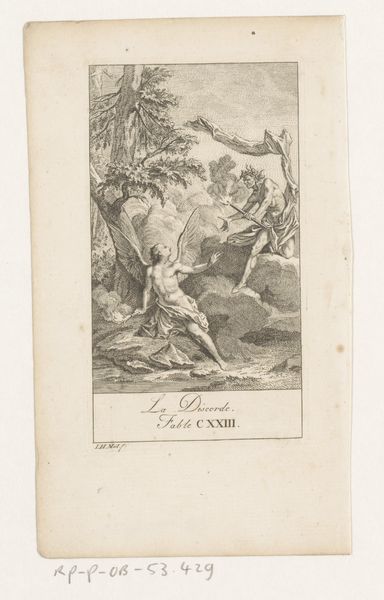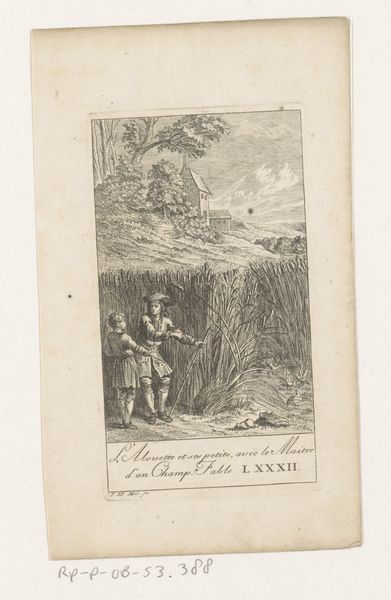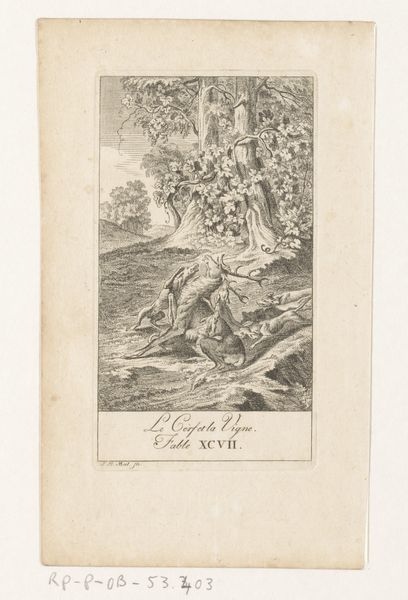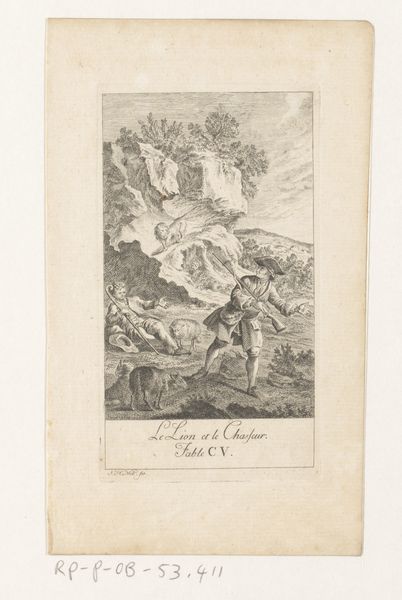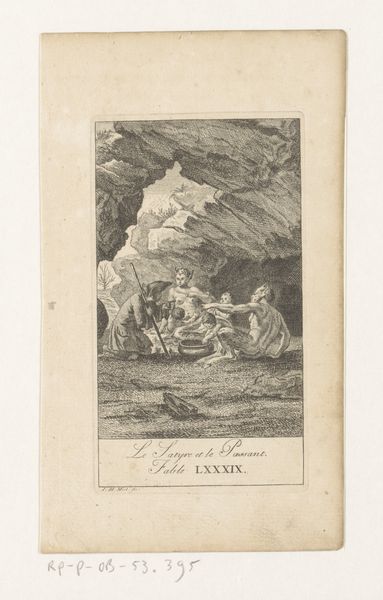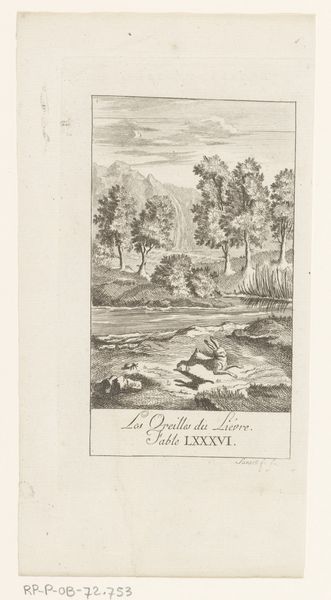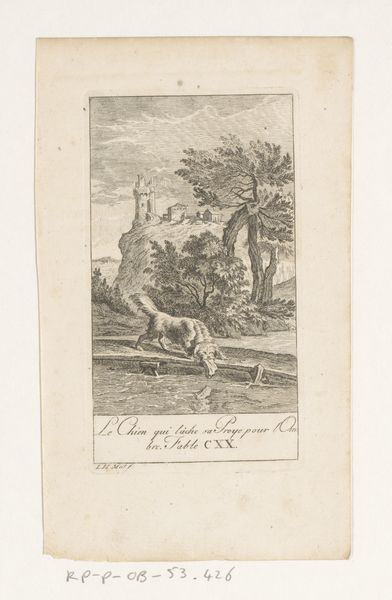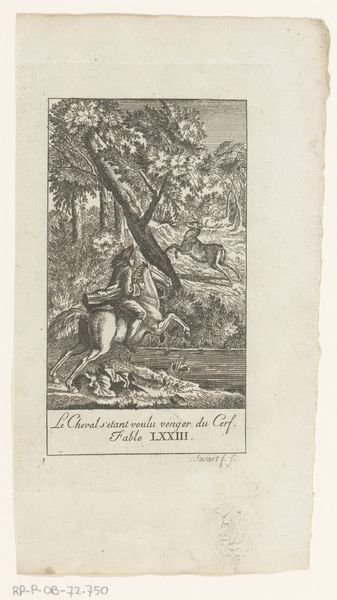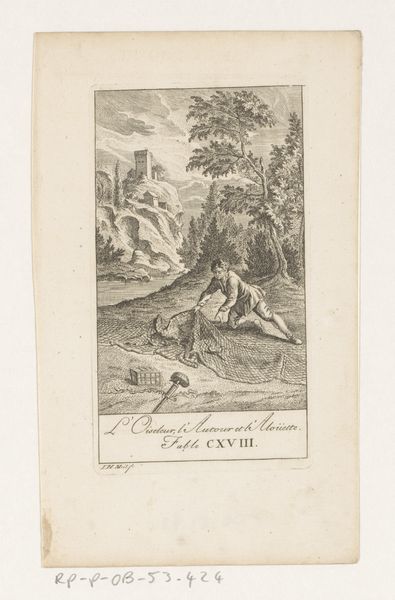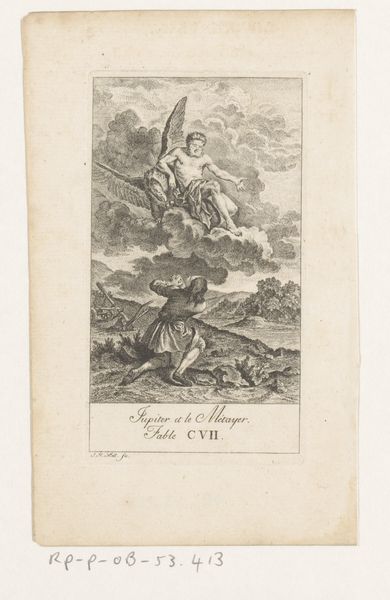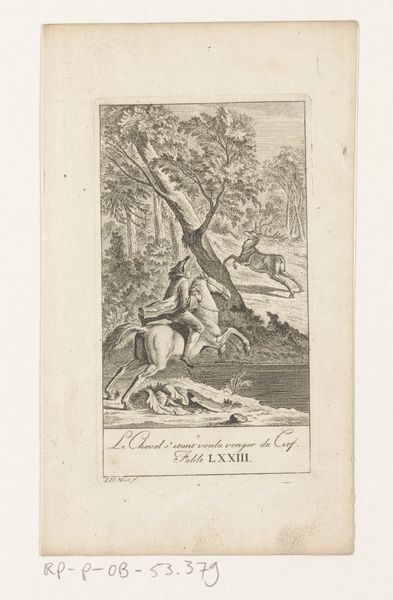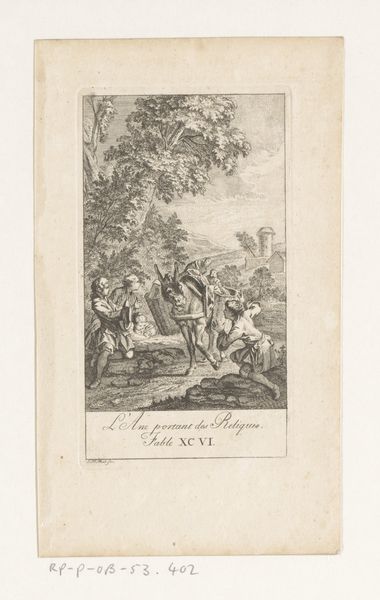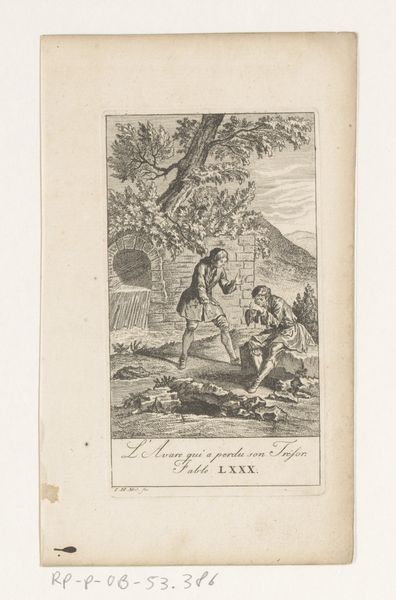
print, paper, engraving
#
allegory
#
baroque
# print
#
old engraving style
#
landscape
#
figuration
#
paper
#
history-painting
#
engraving
Dimensions: height 142 mm, width 81 mm
Copyright: Rijks Museum: Open Domain
Curator: It’s such a delicate scene. A fine 18th-century engraving. This is "Fable of the Woodcutter and Mercury" by Johann Heinrich Meil, dating back to 1758. Editor: The detail is amazing for a print! My immediate feeling is one of surprise, a divine interruption of the mundane. Mercury aloft on his cloud really changes the woodsman's day. Curator: Absolutely, and consider the broader context. This piece, born from the Baroque era, utilizes the allegorical mode that was popular then. It serves as a visual sermon, almost, speaking to moral conduct. Editor: The choice of Mercury is so potent. The caduceus is plain but immediately signals trade, negotiation, wealth and of course the messenger's role—all hovering over this poor woodcutter, down on his luck! What's that fallen object represent, his lost axe head? Curator: Precisely! The fable goes that the honest woodcutter accidentally dropped his axe into the river. Mercury, acting as divine judge, retrieves not only the original axe head, but also gold and silver ones. When the woodcutter claims only his own, Mercury, impressed by his honesty, rewards him with all three. Editor: It’s a straightforward, yet timeless symbol. This really hits on those older values, like personal ethics are really rewarded, an almost impossible ideal by today's social-economical rules! The light reflecting off of mercury almost makes you focus less on the landscape behind him, and focus on him completely Curator: Yes, in a period where moralizing prints circulated widely, offering lessons to diverse audiences. They reflect the burgeoning public sphere and the belief in art as a tool for social improvement, not just religious devotion as had been prominent before. Editor: I'm left thinking about the lasting power of these archetypes—the honest worker, the generous god. Those characters resonate on a really foundational level even today. Curator: Indeed, it demonstrates how the seemingly straightforward narratives capture and convey fundamental societal values, and continue to invite interpretations through centuries.
Comments
No comments
Be the first to comment and join the conversation on the ultimate creative platform.
